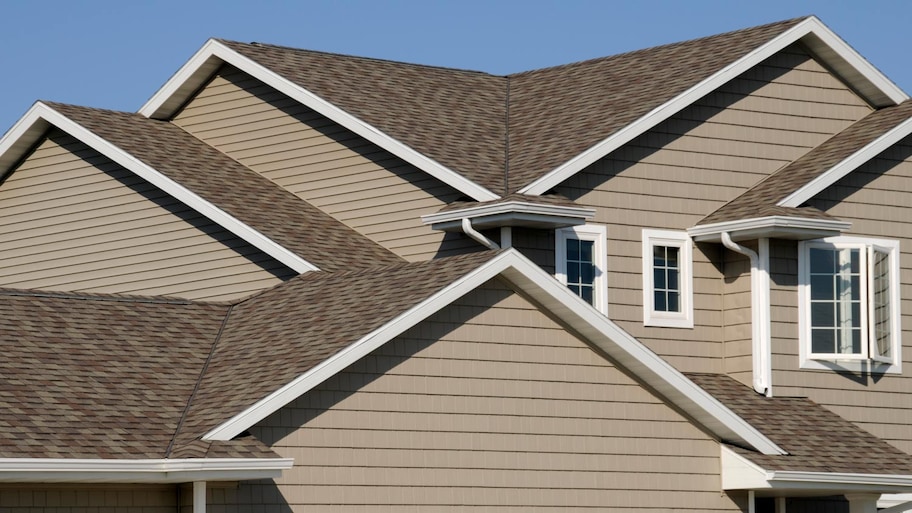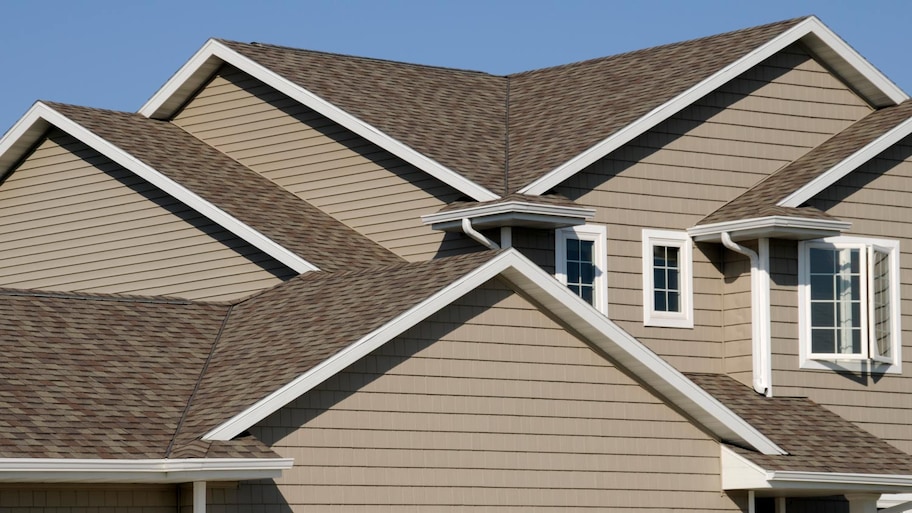When it comes to replacing a roof, timing is key. Choosing the right time of year ensures a smoother and more efficient process, while also minimizing any potential risks. From weather conditions to availability of contractors, there are several factors to consider. This article explores the various seasons and their implications on roof replacement, helping you make an informed decision on when to embark on this important home improvement project.


Factors to Consider
When it comes to replacing a roof, there are several factors that you should take into consideration. These factors can greatly affect the outcome of your roof replacement project and ultimately determine the best time of year to have it done. The four main factors to consider are climate, availability of contractors, cost, and material availability.
Climate
The climate of your area plays a significant role in determining when it is best to replace your roof. Different weather conditions can have a major impact on the installation process and the longevity of your new roof. For example, if you live in an area with harsh winters that experience heavy snowfall, it may be better to schedule your roof replacement during the spring or summer months to avoid any potential complications caused by snow and ice.
On the other hand, if you live in a region that experiences high temperatures during the summer, it is advisable to avoid scheduling your roof replacement during this time. Extreme heat can make the installation process more challenging for the contractors and can also affect the quality of the new roof. Therefore, it is essential to consider your local climate and choose a time of the year when the weather conditions are most favorable for a smooth and successful roof replacement.
Availability of Contractors
Another crucial factor to consider is the availability of contractors. Roofing contractors tend to be busiest during the peak seasons, such as spring and summer when the weather is favorable for outdoor work. This high demand can sometimes result in longer wait times and difficulty in booking appointments with reputable contractors.
It is important to plan ahead and schedule your roof replacement well in advance to ensure that you can secure a trustworthy contractor who can accommodate your needs. If you wait until the last minute, you may be left with limited options and have to settle for less reputable contractors. By being proactive and booking early, you can ensure that you have the best professionals working on your roof replacement project.
Cost
The cost of a roof replacement project can vary depending on the time of year. In general, roofing contractors tend to offer more competitive pricing during the offseason when their workload is lighter. During peak seasons, when demand is high, contractors may charge higher prices due to increased demand and limited availability.
If you are looking to save some money on your roof replacement, it may be worth considering scheduling the project during the offseason. This can potentially result in cost savings without compromising on the quality of the work. However, it is important to remember that price should not be the sole determining factor. It is essential to find a balance between cost and quality to ensure that you are getting the best value for your money.
Material Availability
The availability of roofing materials is another important consideration when planning a roof replacement. Some materials may be in higher demand during certain times of the year, leading to potential delays if they are out of stock. It is crucial to choose a time of the year when the materials you want for your new roof are readily available.
Additionally, some roofing materials may perform better in certain weather conditions. For example, certain types of shingles may be more resistant to high winds or heavy rain. Considering the weather patterns in your area and selecting a material that is suitable for those conditions can help ensure the longevity and durability of your new roof.
Spring
Advantages
Spring is often considered an ideal time for roof replacements due to its milder weather conditions. The temperatures are typically moderate, making it comfortable for the roofing crew to work without the extreme heat or cold. Additionally, springtime usually brings less rainfall, reducing the chances of weather-related delays during the installation process.
Another advantage of scheduling a roof replacement in the spring is the potential for cost savings. Many contractors offer discounts or promotions during the offseason to attract customers and fill their schedules. Taking advantage of these deals can help you save money on your roof replacement project.
Disadvantages
One of the main disadvantages of choosing spring for your roof replacement is the high demand for contractors. As mentioned earlier, many homeowners also consider spring an ideal time for home improvement projects, including roof replacements. This increased demand can result in longer wait times and difficulty in booking appointments with reputable contractors.
Furthermore, if you live in an area that experiences heavy rainfall during the spring, there is a risk of weather-related delays. While spring generally brings less rainfall compared to other seasons, unexpected storms can still occur and disrupt the installation process.
Considerations
If you decide to schedule your roof replacement in the spring, it is crucial to plan ahead and book a reputable contractor well in advance. By doing so, you can ensure that you have a qualified professional working on your roof and minimize the risk of delays. Additionally, it is recommended to closely monitor weather forecasts and have contingency plans in place in case of unexpected storms.


Summer
Advantages
Summer is another popular season for roof replacements, especially in areas with milder weather conditions. The longer daylight hours and warm temperatures provide ideal working conditions for roofing crews. Additionally, the absence of rain or snow during the summer months reduces the risk of weather-related delays.
Another advantage of scheduling a roof replacement in the summer is the availability of contractors. Many homeowners tend to plan their home improvement projects during the spring, which means that contractors may have more availability during the summer months.
Disadvantages
One of the main disadvantages of replacing your roof during the summer is the potential for extreme heat. High temperatures can make the installation process more challenging for the roofing crew. It can also affect the quality of the new roof if not properly managed.
Furthermore, the high demand for contractors during the summer may result in higher pricing. Contractors may charge premium rates due to increased demand and limited availability. Therefore, it is essential to consider your budget and weigh the cost benefits against the potential challenges of installing a roof in hot weather.
Considerations
If you choose to have your roof replaced during the summer, it is important to take steps to mitigate the effects of the heat. Ensure that the roofing crew takes regular breaks, stays hydrated, and follows proper safety precautions. It may also be beneficial to choose roofing materials that are more resistant to heat to ensure the longevity and performance of your new roof.
Fall
Advantages
Fall is another suitable season for roof replacements due to its mild temperatures and lower rainfall. The cooler weather makes it comfortable for the roofing crew to work, and the absence of extreme heat reduces the risk of material damage.
Another advantage of scheduling a roof replacement in the fall is the potential for cost savings. As the demand for contractors starts to decrease after the peak summer season, some may offer discounted rates or promotions to attract customers. By taking advantage of these deals, you can potentially save money on your roof replacement project.
Disadvantages
One disadvantage of replacing your roof in the fall is the potential for changing weather conditions. While fall is generally known for its milder temperatures and lower rainfall, unexpected storms can still occur. It is important to closely monitor weather forecasts and have contingency plans in place to mitigate the risk of weather-related delays.
Additionally, the availability of contractors may start to decrease as the season progresses. If you delay scheduling your roof replacement too much, you may find it more challenging to secure a reputable contractor with availability.
Considerations
If you decide to have your roof replaced in the fall, it is essential to plan ahead and book a contractor as early as possible. This will ensure that you have a qualified professional working on your roof and minimize the risk of delays. It is also advisable to consider weather patterns in your area and choose roofing materials that are suitable for the fall season.


Winter
Advantages
While winter may not be the most popular season for roof replacements, it still offers some advantages. One of the main advantages is the potential for cost savings. Contractors tend to be less busy during the winter months, which can translate into lower pricing. If you are looking to save money on your roof replacement project, scheduling it during the offseason winter months may be a viable option.
Another advantage of replacing your roof in the winter is the ability to identify and address any existing issues before they worsen. By tackling the project during the off-peak season, you can potentially prevent further damage caused by leaks or other roofing issues.
Disadvantages
One of the main disadvantages of scheduling a roof replacement in the winter is the challenging weather conditions. Cold temperatures, snow, and ice can make the installation process more difficult and potentially dangerous for the roofing crew. It may also take longer for the roof adhesive to properly bond in colder temperatures.
Furthermore, the availability of contractors may be limited during the winter months. Many roofing companies scale back their operations or focus on indoor projects during this time. This limited availability can make it more challenging to find a contractor with the expertise and availability to complete your roof replacement project.
Considerations
If you choose to replace your roof in the winter, it is crucial to carefully consider the weather conditions and select a time when the forecast is most favorable. It is also advisable to work with experienced roofing contractors who are familiar with the challenges of installing roofs in colder temperatures. By taking these precautions, you can ensure that your roof replacement project is done safely and effectively.
Other Considerations
Inspections
Regardless of the time of year you choose for your roof replacement, it is essential to schedule a thorough inspection beforehand. A professional inspection will help identify any underlying issues that need to be addressed before the installation process. By addressing these issues early on, you can ensure the proper installation of your new roof and prevent any potential problems down the line.
Permitting
In many jurisdictions, a permit is required for roof replacement projects. It is important to check with your local building department to determine the specific requirements and obtain the necessary permits. Keep in mind that the permitting process may take some time, so it is advisable to start the process well in advance of your desired installation date.
Scheduling
Once you have considered all the factors, chosen the best time of year for your roof replacement, and selected a reputable contractor, it is crucial to establish a clear schedule. Clear communication with the contractor is key to ensure that both parties are on the same page regarding the start date, estimated timeline, and any potential contingencies. Regularly reviewing the schedule and staying in touch with the contractor will help ensure that the project stays on track.


Conclusion
Choosing the best time of year to replace your roof involves careful consideration of various factors. By evaluating your local climate, the availability of contractors, the cost implications, and the material availability, you can make an informed decision that suits your needs and ensures the success of your roof replacement project. Remember to plan ahead, take into account any additional considerations such as inspections and permitting, and closely monitor weather forecasts to minimize the risk of delays. With proper planning and the right professionals by your side, you can achieve a successful roof replacement that enhances the appearance, functionality, and value of your home.







